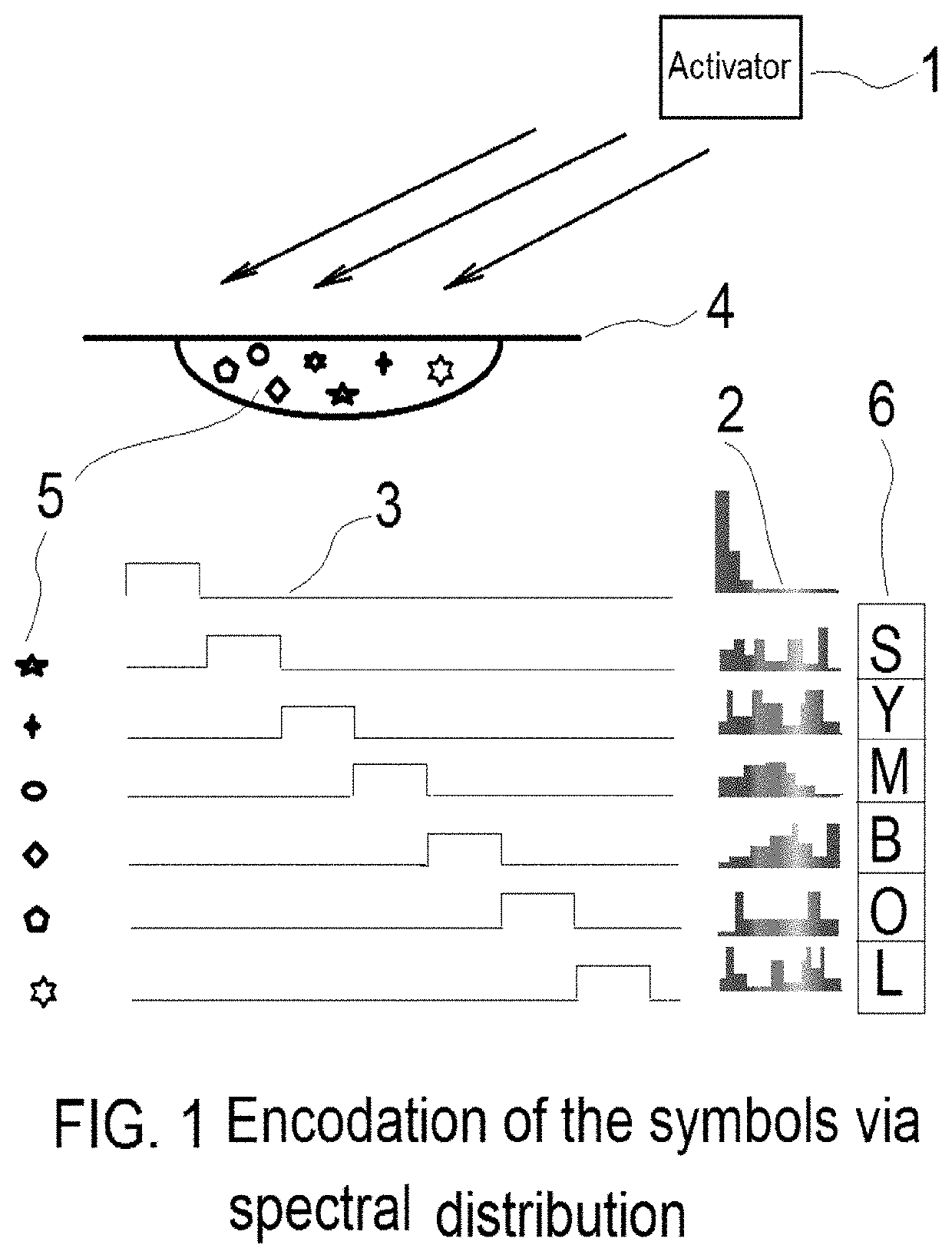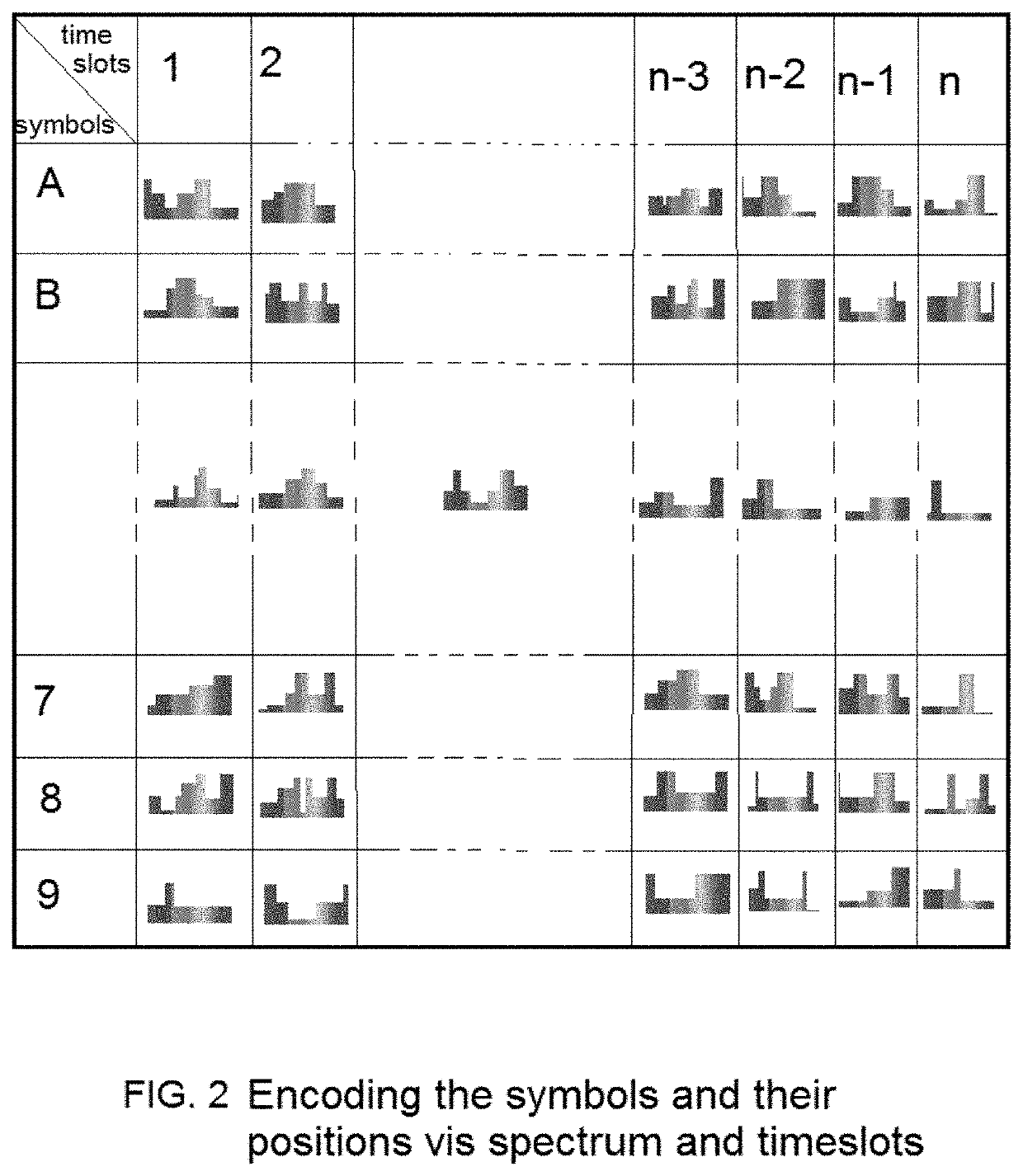Method and system for item marking and identification
a technology of applied in the field of method and system for item marking and identification, can solve the problems of many such cameras on the market producing blurred images, images extracted by mobile device cameras are not always of a quality sufficient for bar codes, and bar codes are typically not aesthetically pleasing to human observers, so as to facilitate and speed up user's work, limit the range of operations, and limit computational capacity
- Summary
- Abstract
- Description
- Claims
- Application Information
AI Technical Summary
Benefits of technology
Problems solved by technology
Method used
Image
Examples
first embodiment
[0075]Understanding of the said FC will be further enhanced with the aid of FIG. 1,2,3. The item's surface contains a Cavity (11) of an arbitrary shape also comprises at least two Outlets (10). The said Cavity (11) is located below the plane of the item's surface. The said Cavity (11) is filled in with the Transparent Solid Medium (TSM) (9). The said outlets (10) are shaped in order to keep the TSM firmly inside the said Cavity. The maximum size at the cross section of the said Cavity (11) is kept 5 mm or at most ¼ of the cross-section of the surrounding item's area, whichever is smaller. In a preferred embodiment shown on FIG. 3 the said TSM top's surface is aligned with the same of the said item. Furthermore the said TSM contains a collection of PDFE (5,8,14 of FIG. 3, FIG. 4 respectively). Each particle in the said collection is chosen in such a way that they all have the non-overlapping afterglow times and the respective spectral / polarization characteristics encode a symbol from...
second embodiment
[0077]In its second embodiment the said FC has a flat shape shown on FIG. 4, wherein the top surface of TSM does not elevate above the surface (12) of the said item more than 2 mm. It comprises a layer of TSM (13) with enclosures at least one fluorescent / phosphorescent Particle (FPP) wherein FPP forms PDFE (5, 8, 14). The said TSM (13) is attached to the item's surface by an adhesive material (15). Similarly each particle encodes exactly one symbol.
[0078]The said PDFE (5,8,14) comprises at least one individual Fluorescent / Phosphorescent Particle-oentity (FPP) of a maximum size of 0.1 mm. The critical physical properties of the said FPP are polarization degree, after emission spectrum, the associated time delay. The said after emission spectrum average of each said particle (FPP) is within 300 through 1000 nm with width of the spectral band of no more than 250 nanometers. The absorption spectrum is within he said spectral band minus 100 nm with the width no more than 200 nm. The asso...
PUM
 Login to View More
Login to View More Abstract
Description
Claims
Application Information
 Login to View More
Login to View More - R&D
- Intellectual Property
- Life Sciences
- Materials
- Tech Scout
- Unparalleled Data Quality
- Higher Quality Content
- 60% Fewer Hallucinations
Browse by: Latest US Patents, China's latest patents, Technical Efficacy Thesaurus, Application Domain, Technology Topic, Popular Technical Reports.
© 2025 PatSnap. All rights reserved.Legal|Privacy policy|Modern Slavery Act Transparency Statement|Sitemap|About US| Contact US: help@patsnap.com



